Disclosure: This article contains affiliate links. We may earn a commission from purchases at no extra cost to you, which helps our travel content.
The sun was just beginning to cast long shadows across the rolling pampas when I first arrived in Melo, a place that feels worlds away from Uruguay's more frequented coastal destinations. As someone who's spent years seeking authentic cultural experiences, I've grown weary of the Instagram-perfect locations that often sacrifice soul for aesthetics. Melo, the capital of the Cerro Largo department in northeastern Uruguay, offers something increasingly rare in our hyper-connected world: genuine gaucho traditions that haven't been packaged and sanitized for mass tourism. This modest city of roughly 50,000 residents sits just 60 kilometers from the Brazilian border, creating a fascinating cultural blend while maintaining deep roots in Uruguay's rural heritage. What began as a professional research trip quickly evolved into one of the most immersive cultural weekends I've experienced in South America—a journey into the heart of gaucho country where the rhythm of life still moves to the ancient cadence of horseback and campfire.
Understanding Gaucho Heritage in Uruguay's Interior
While most travelers to Uruguay flock to Montevideo's colonial charm or Punta del Este's glittering coastline, the country's soul has always resided in its interior. The gauchos—those skilled horsemen who have become synonymous with the South American pampas—aren't folklore characters here; they're your neighbors, your guides, and often, by the end of your stay, your friends.
Melo serves as an unassuming gateway to this heritage. Unlike Argentina, where gaucho culture has been more aggressively commercialized, Uruguay's approach feels refreshingly authentic. During my visit, I stayed at Estancia El Ceibo, a working ranch about 30 minutes outside Melo that offers visitors a chance to experience gaucho life firsthand.
The estancia's fifth-generation owner, Carlos, explained how gaucho traditions have evolved while maintaining their essence. 'The tools might change, but the connection to the land and the animals remains the same,' he told me as we watched ranch hands work with a precision born from centuries of tradition.
What struck me most was how the gaucho identity transcends mere occupation—it's a philosophy, an approach to life that values self-reliance, hospitality, and harmony with nature. In an era of digital distraction, there's something profoundly grounding about witnessing this continuity of culture.

💡 Pro Tips
- Learn a few basic Spanish phrases before visiting, as English is limited outside tourist areas
- Respect the gaucho dress code if participating in traditional activities (long pants, closed shoes)
- Ask permission before photographing working gauchos—respect their craft
Horseback Adventures Through the Pampas
There's simply no way to appreciate gaucho culture without experiencing the landscape as they do—from horseback. While I've ridden in various destinations around the world, from Morocco's Atlas Mountains to Wyoming's ranches, the horseback experience in Melo has a distinctive character.
The Criollo horses used in the region are remarkably sturdy and sure-footed, descendants of horses brought by Spanish conquistadors that have adapted perfectly to the rolling terrain of the pampas. What impressed me most was how the relationship between gaucho and horse feels less like master and animal and more like a partnership built on mutual respect.
I booked a full-day ride through Turismo Rural Uruguay, which paired our small group with Don Pedro, a 72-year-old gaucho whose weathered face told stories before he even spoke. As we rode through the undulating grasslands, crossing streams and navigating gentle hills, Don Pedro pointed out native plants, shared traditional gaucho remedies, and demonstrated the art of tracking cattle.
For those planning similar excursions, I'd recommend investing in a quality wide-brimmed hat before your trip. The Uruguayan summer sun is unforgiving, and the traditional gaucho hats (while authentic) aren't typically available in sizes that fit non-locals. My Tilley hat has accompanied me across five continents and provided essential protection during our eight-hour ride.
The day culminated in a stream-side lunch where Don Pedro prepared a traditional asado using nothing more than a knife that's likely older than I am and an intuitive understanding of fire that made me question everything I thought I knew about grilling meat.
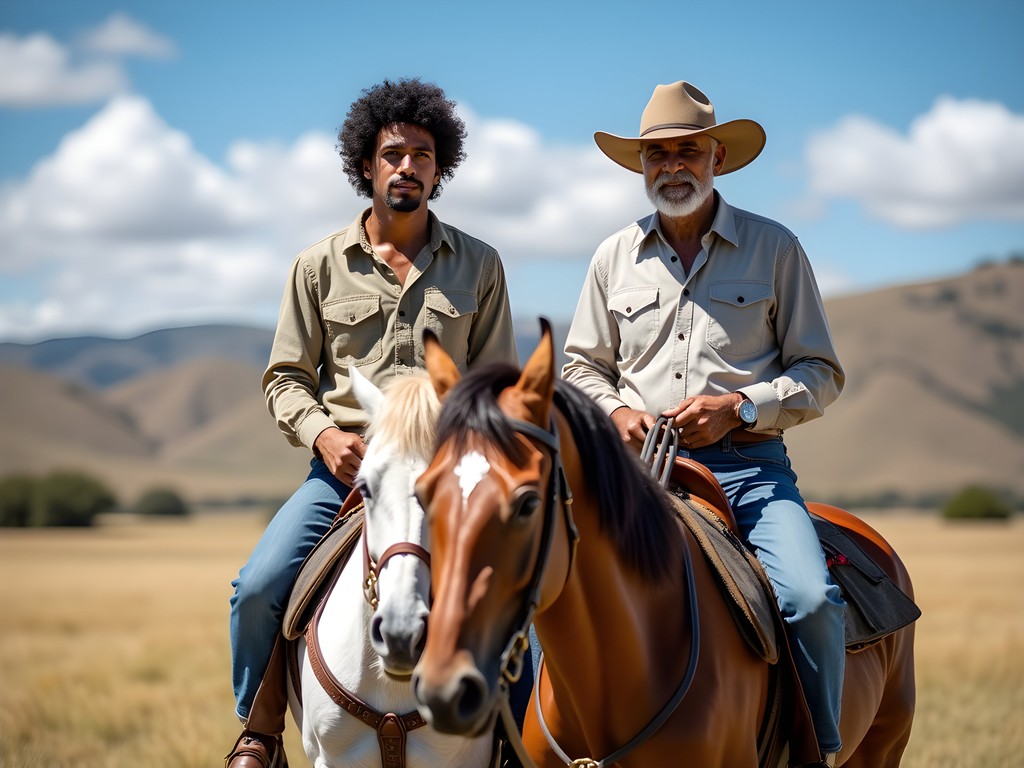
💡 Pro Tips
- Book horseback excursions at least 2-3 days in advance, especially during summer months
- Wear long pants and closed-toe shoes, even in warm weather
- Bring cash for tips as credit cards aren't widely accepted in rural areas
The Art of the Uruguayan Asado
If horseback riding is the soul of gaucho culture, then the asado (barbecue) is unquestionably its heart. Unlike the quick-cooking methods popular in North America and Europe, the Uruguayan asado is a slow, almost meditative process that transforms cooking into a social ritual.
During my stay, I was fortunate to participate in several asados, each offering insights into this cornerstone of Uruguayan cultural identity. At Estancia El Ceibo, the asado began mid-morning with the careful building of the fire. 'The wood is as important as the meat,' explained Martín, the estancia's asador (grill master), as he selected specific hardwoods for their burning properties.
What followed was a masterclass in patience. The meat—primarily cuts unfamiliar to most North Americans like vacío (flank), asado de tira (short ribs), and matambre (flank steak)—was seasoned only with coarse salt before being arranged at varying distances from the coals. No marinades, no fancy rubs—just quality meat, fire, and time.
The most remarkable aspect was how the asado transformed the social dynamics of our group. As we gathered around the fire, drinking mate (the traditional herbal tea that deserves its own dedicated post) and watching Martín work, conversations deepened and cultural barriers dissolved. By the time we sat down to eat—some three hours after preparations began—we were no longer tourists and hosts but simply people sharing food and stories.
For those looking to recreate a bit of this experience at home, I've found that a traditional mate set makes both an authentic souvenir and a wonderful way to incorporate a small gaucho ritual into daily life. The communal sharing of mate mirrors the community spirit that makes the asado so special.
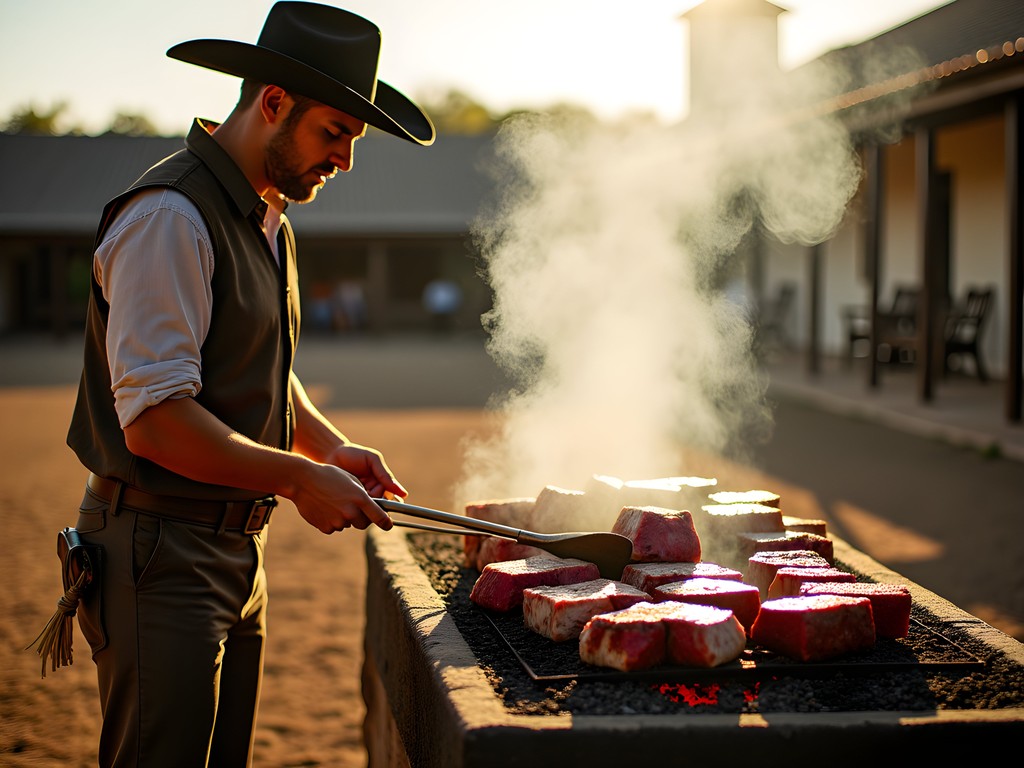
💡 Pro Tips
- Don't rush an asado—plan at least 3-4 hours for the full experience
- Learn the basic etiquette of mate drinking before participating
- Vegetarians should notify hosts in advance, as traditional asados are very meat-centric
The Patria Gaucha Festival Experience
My visit to Melo fortuitously coincided with a smaller regional version of Uruguay's famous Patria Gaucha festival. While the main festival occurs in Tacuarembó each March, many Uruguayan towns host their own celebrations of gaucho heritage throughout the summer months.
The festival transformed Melo's usually quiet central plaza into a vibrant showcase of rural traditions. Families arrived on horseback dressed in their finest traditional attire—men in bombachas (loose-fitting trousers), women in flowing dresses with intricate embroidery. The level of horsemanship on display was staggering, from children barely old enough to walk confidently managing their ponies to elderly gauchos performing riding tricks that seemed to defy physics.
What makes these festivals particularly special is their authenticity—they aren't staged for tourists but are genuine community celebrations. I was one of only three obvious foreigners in attendance, yet was welcomed warmly at every turn. An elderly woman named Elena insisted I try her homemade tortas fritas (fried bread), while a group of young gauchos invited me to join their mate circle.
The competitions were the highlight—displays of traditional skills like horse breaking, lassoing, and the breathtaking sortija, where riders at full gallop attempt to spear a small ring with a thin stick. These aren't recreations of lost arts but demonstrations of skills still used daily on working ranches.
For photography enthusiasts, these festivals offer incredible opportunities. I captured some of my best shots using my telephoto zoom lens, which allowed me to capture authentic moments without being intrusive. The combination of colorful traditional clothing, skilled horsemanship, and genuine emotion made for compelling images that have become some of my most treasured travel memories.
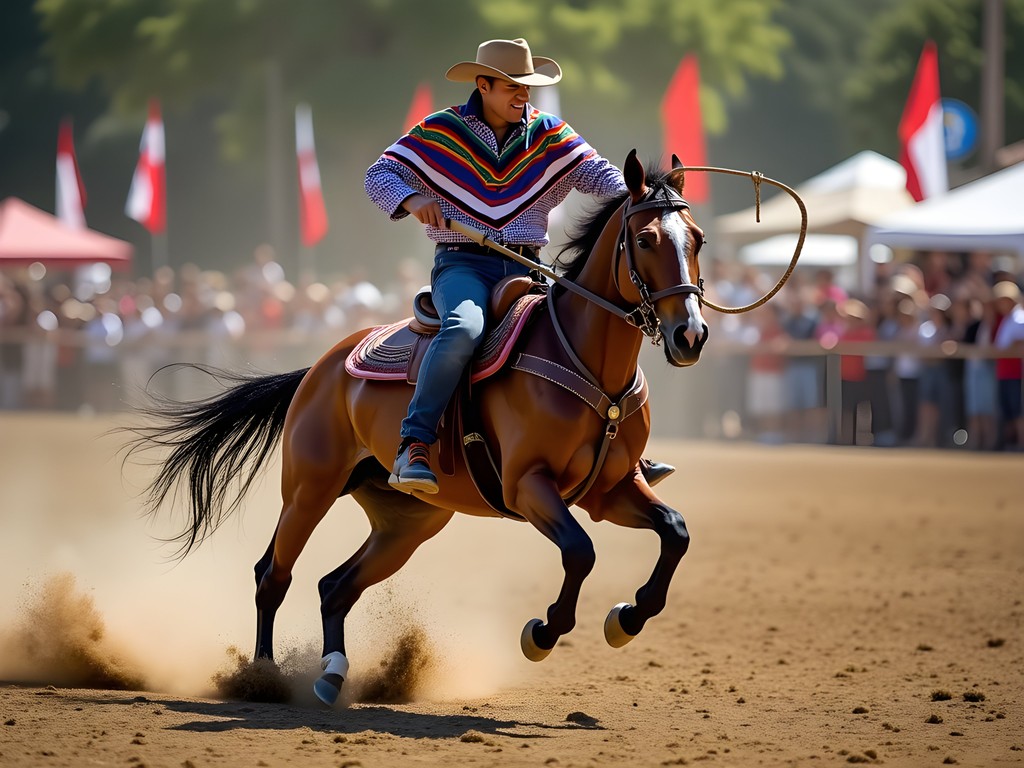
💡 Pro Tips
- Check local event calendars as smaller festivals often aren't advertised internationally
- Bring cash for food vendors and artisans selling traditional crafts
- Respect photography etiquette—ask permission when taking close-up portraits
Connecting with Local Artisans and Craftspeople
Beyond the dramatic displays of horsemanship and culinary traditions, Melo offers visitors a chance to appreciate the material culture that has developed around gaucho life. The craftsmanship I encountered was all the more impressive for being functional rather than merely decorative.
I spent a fascinating afternoon at the workshop of Don Raúl, a third-generation silversmith who creates traditional gaucho knife handles, mate bombillas (metal straws), and belt buckles. Using techniques passed down through generations, he transforms silver into intricate pieces that tell stories of the pampas. What struck me most was how each piece reflected both tradition and the individual artisan's creativity—innovation within a framework of heritage.
Similarly, the leather workshops around Melo showcase a level of skill that comes from necessity. Gaucho equipment—from saddles to the distinctive facón knives they carry—must withstand harsh conditions and daily use. At Taller del Cuero, I watched artisans hand-stitch leather using techniques virtually unchanged for centuries. The owner, Sebastián, explained how different leathers are selected for specific purposes and demonstrated the patient process of creating a traditional gaucho belt.
For travelers looking for authentic souvenirs, these workshops offer items of genuine cultural significance and exceptional quality. I purchased a leather mate gourd case that has since become one of my most treasured travel mementos. Unlike mass-produced souvenirs, these handcrafted items connect you directly to the artisans and their traditions.
Many workshops welcome visitors, though it's best to arrange visits through your accommodation as formal opening hours are rare. What these experiences lack in convenience, they more than make up for in authenticity and the opportunity to support traditional crafts directly.
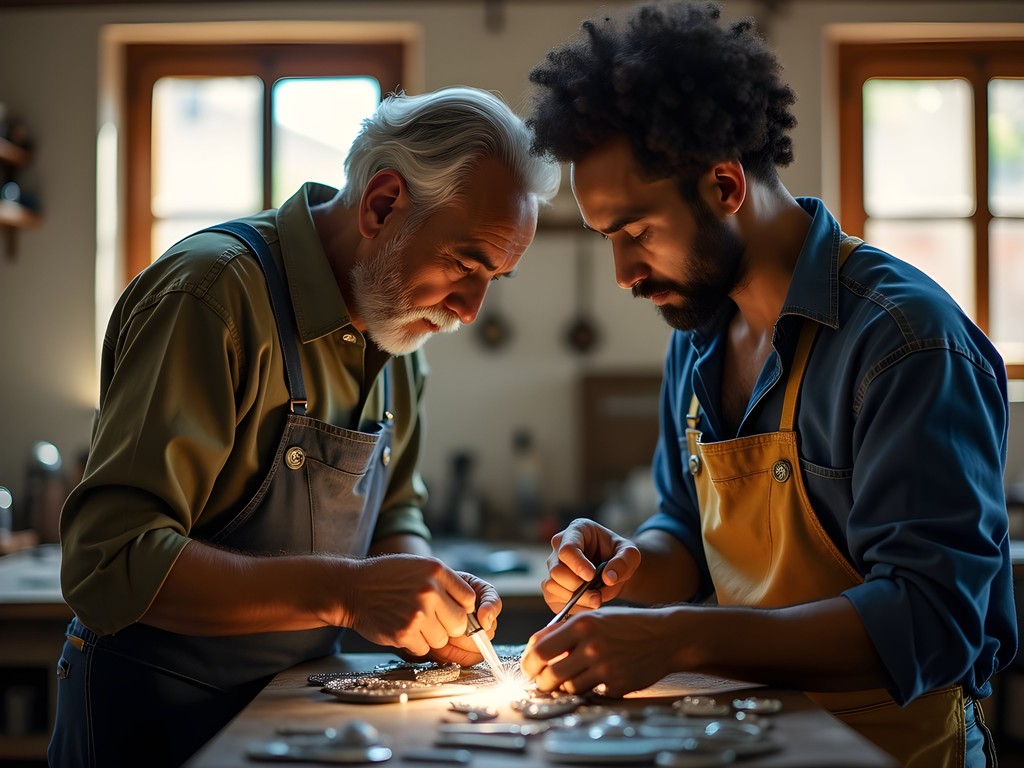
💡 Pro Tips
- Bring USD or Uruguayan pesos as most artisans don't accept credit cards
- Allow plenty of time for workshop visits as they often include lengthy conversations and mate sharing
- Learn basic leather and silver care to preserve your purchases
Final Thoughts
As my weekend in Melo drew to a close, I found myself reluctant to leave this corner of Uruguay that had so thoroughly captivated me. In an age where authentic cultural experiences are increasingly commodified and packaged for mass consumption, Melo stands as a refreshing reminder that genuine traditions still thrive when they remain rooted in community rather than tourism. The gaucho culture I encountered wasn't preserved like a museum exhibit but lived daily with pride and practicality. For travelers willing to venture beyond Uruguay's more established destinations, Melo offers something increasingly precious: a culture that welcomes visitors without performing for them. Whether you're galloping across the pampas, sharing mate around an asado, or admiring the skilled craftsmanship of local artisans, Melo invites you to participate rather than merely observe. And isn't that the essence of meaningful travel? I'll be back, Melo—until then, keep those traditions alive.
✨ Key Takeaways
- Melo offers authentic gaucho culture experiences largely untouched by mass tourism
- Participating in traditional activities like horseback riding and asados provides deeper cultural understanding than observation alone
- Local festivals showcase genuine community traditions rather than performances staged for tourists
- Supporting local artisans helps preserve traditional crafts and provides meaningful souvenirs
📋 Practical Information
Best Time to Visit
December through March (summer)
Budget Estimate
$75-150 USD per day including accommodation, activities and meals
Recommended Duration
2-3 days minimum, ideally a long weekend
Difficulty Level
Easy To Moderate (Some Activities Require Basic Fitness)
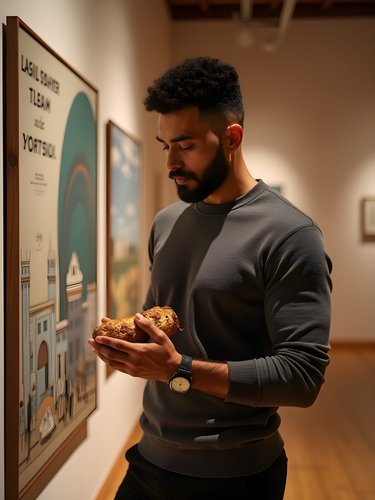
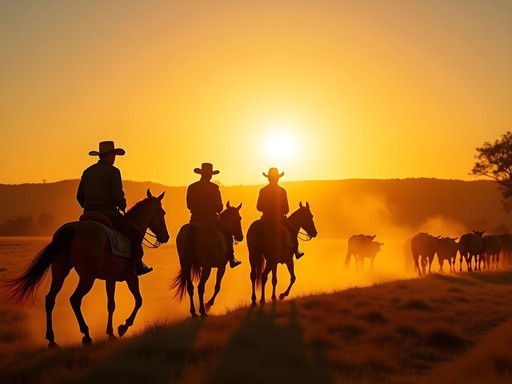

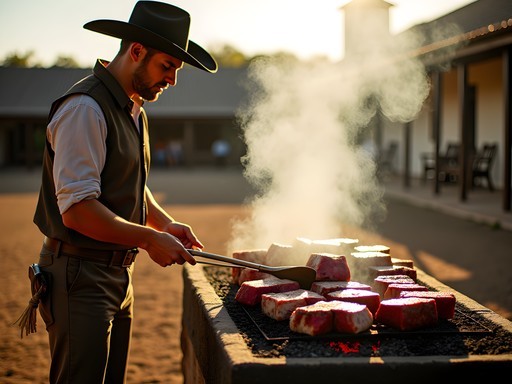
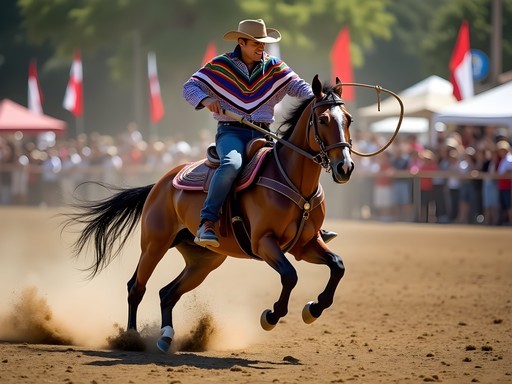
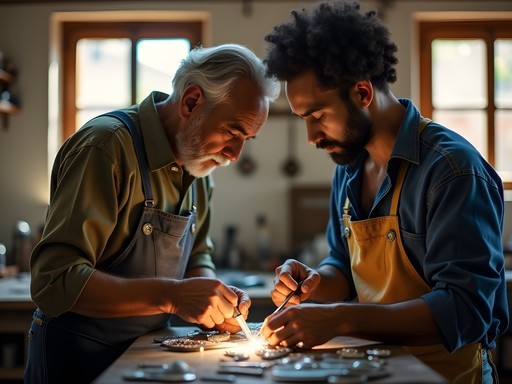










Comments
redmood
We visited Melo last month after reading your post and it was incredible! One tip for anyone going - learn a few Spanish phrases before you go. Very little English is spoken there which makes it all more authentic, but challenging if you don't speak any Spanish at all. The locals really appreciated our attempts though!
smarttime
Did you try the mate drinking ritual with the gauchos? I've heard it's a big part of their culture.
redmood
Yes! They take their mate VERY seriously. We brought back some yerba mate and a traditional gourd. It's become our morning ritual now!
moonlife
Just added Melo to my Uruguay itinerary after reading this! Can't wait to experience a real asado with the gauchos.
Sage Dixon
Timothy, your post brought back so many memories of my time in Uruguay's interior! The horseback riding through the pampas was the highlight of my entire South American journey. For anyone planning to visit, I highly recommend connecting with Estancia El Rincón just outside Melo. The owner, Carlos, paired me with a horse that matched my intermediate riding ability perfectly, and we spent two full days exploring the countryside. The saddles they use are traditional recado saddles - quite different from Western or English styles and take some getting used to, but they're incredibly comfortable for long rides. I captured the most stunning sunset photos from horseback. Make sure to bring a good camera strap if you're photographing while riding - it was a lifesaver for me.
dreamclimber
This Patria Gaucha Festival sounds incredible! When exactly does it happen? I'd love to plan a trip around it.
Sage Dixon
The Patria Gaucha Festival usually happens in early March. I was there in 2024 and it ran from March 6-10. Absolutely worth planning your trip around it - but book accommodations WAY in advance as Melo fills up completely!
dreamclimber
Thanks so much, Sage! I'll mark my calendar for next March.
Douglas Bradley
Timothy, your piece on Melo really resonates with what I experienced in Uruguay's interior last year. The gaucho culture there feels remarkably preserved compared to other parts of South America. I spent three days with a family outside Melo and participated in their daily cattle work - it's physically demanding but incredibly rewarding. What struck me most was how the gaucho traditions aren't maintained for tourists but are simply their way of life. Did you get a chance to visit any of the traditional pulperías (rural stores) in the region? They're fascinating social hubs where you can really observe authentic gaucho interactions.
redmood
Douglas, how did you arrange staying with a local family? That sounds amazing!
Douglas Bradley
I connected through a small organization called Uruguay Rural that links travelers with estancias. Not a formal homestay program, but they know families willing to host visitors interested in their way of life. Worth the effort to find them!
smarttime
This is exactly the kind of hidden gem I love reading about! Melo sounds incredible and so much more authentic than the usual tourist spots.
Sophia Gomez
Timothy, your post captures the essence of rural Uruguay perfectly! I was in Melo for a business trip last year and extended my stay just to experience more of the gaucho culture. For anyone planning to visit, I highly recommend timing your trip with the Patria Gaucha festival if possible - it's absolutely worth it. Also, the small pension where I stayed, Estancia El Ceibo, offered amazing horseback riding tours with actual working gauchos, not the touristy kind. I documented the whole experience with my travel camera which was perfect for capturing those stunning sunset rides across the pampas. Timothy, did you find the locals as welcoming as I did? They practically adopted me by the end of my stay!
Timothy Jenkins
Absolutely, Sophia! The hospitality was incredible. I'm still in touch with the family that hosted me for the asado. And thanks for the Estancia El Ceibo tip - I'll have to check it out next time!
escapefan
Going to Uruguay next month and now thinking of adding Melo to the itinerary. Is it hard to get there from Montevideo?
Sophia Gomez
Not at all! There are regular buses from Tres Cruces terminal in Montevideo. Takes about 5-6 hours but the scenery is beautiful. Just book a few days ahead during festival times!
escapefan
Those asado photos are making me hungry! Looks amazing!
islandblogger
This brought back so many memories! I visited Melo last year during the Patria Gaucha festival and it was incredible. The horseback riding through those endless pampas is something I'll never forget. Did you get to try drinking mate with the locals? They were so particular about the ritual - I loved how they took the time to explain everything to me. Definitely one of the most authentic cultural experiences I've had in South America.
Timothy Jenkins
Yes! The mate ritual was fascinating. My gaucho host Pedro was horrified when I tried to stir it with the bombilla at first. Such a learning experience!
islandblogger
Haha same here! I made that exact mistake and got the same reaction. Did you bring any mate gear home with you?
Timothy Jenkins
I did! Got a beautiful handcrafted mate gourd with silver details from a local artisan. Use it almost daily now!
adventureguide
Great post! I spent two weeks in Uruguay last year and Melo was definitely the highlight. For anyone planning to visit, I recommend bringing cash as ATMs can be unreliable and many small businesses don't accept cards. Also, the local cheese (queso colonia) paired with membrillo (quince paste) makes an amazing snack after a long day of riding. If you can, try to catch some traditional folklore music at night - even the toughest gauchos get emotional when the guitars come out. The genuine hospitality in this region is something you rarely find in more touristy areas.
Venture X
Premium card with 2X miles, $300 travel credit, Priority Pass